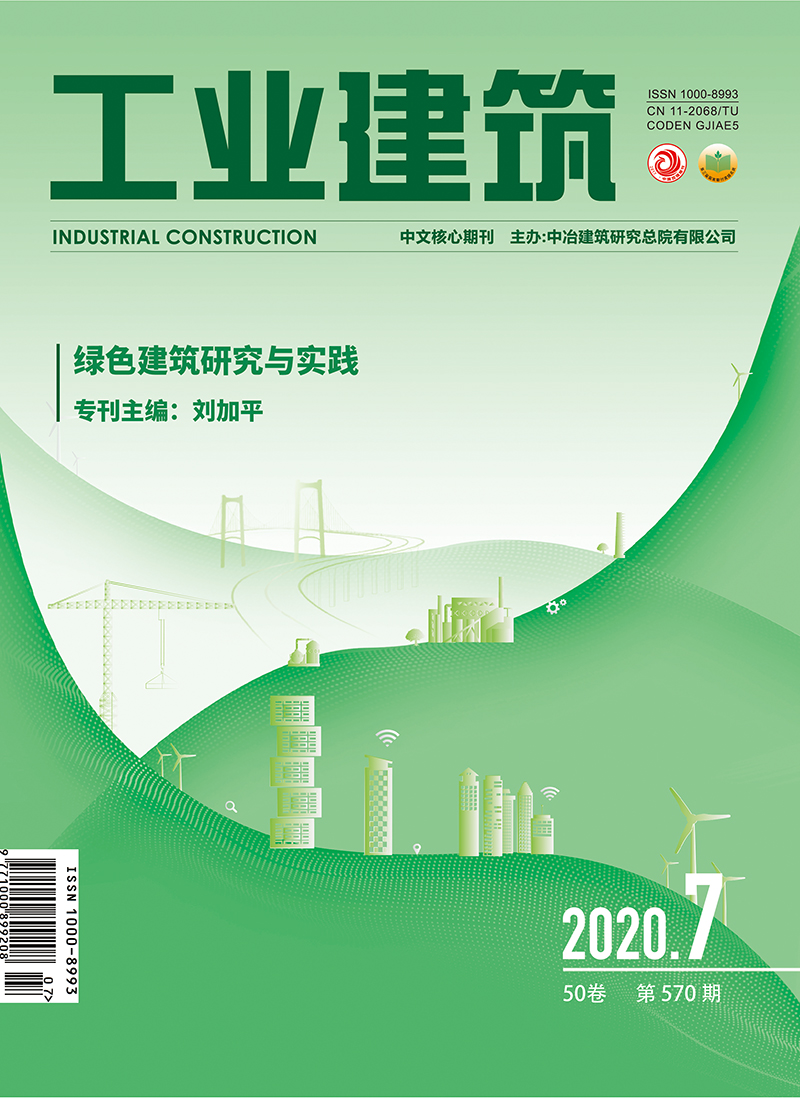|
肖华斌, 盛硕, 刘嘉. 低碳生态城市空间规划途径研究综述与展望[J]. 城市发展研究, 2015, 22(12):8-12.
|
|
FONG W K,MATSUMOTO H,HO C S,et al. Energy Consumption and Carbon Dioxide Emission Considerations in the Urban Planning Process in Malaysia[J].Journal of the Malaysian Institute of Planners,2008(6):101-130.
|
|
刘志林, 秦波. 城市形态与低碳城市:研究进展与规划策略[J]. 国际城市规划, 2013, 28(2):4-11.
|
|
秦波,邵然.低碳城市与空间结构优化:理念、实证和实践[J].国际城市规划,2011,26(3):73-78.
|
|
GLAESER E L, KAHN M E. The Greenness of Cities:Carbon Dioxide Emissions and Urban Development[J]. Journal of Urban Economics,2009,67(3):404-418.
|
|
AUFFHAMMER M, CARSON R T. Forecasting the Path of China's CO2 Emissions Using Province-Level Information[J]. Journal of Environmental Economics and Management,2007,55(3):229-247.
|
|
张希晨. 低碳概念下的建筑设计应对策略[J]. 城市发展研究, 2010(7):51-57.
|
|
郝靖欣,张希晨. 持续发展与绿色建筑[J]. 时代建筑,1999(4):37-39.
|
|
吴恩融, 穆钧. 基于传统建筑技术的生态建筑实践:毛寺生态实验小学与无止桥[J].时代建筑,2007(4):50-57.
|
|
张希晨,郝靖欣.从无锡工业遗产再利用看城市文化的复兴[J].工业建筑,2010,40(1):31-34
,20.
|
|
汪芳. 张通. 清华大学环境能源楼:中意合作的生态示范性建筑[J]. 建筑学报,2008(2):34-39.
|
|
江亿.中国建筑能耗现状及节能途径分析[J].新建筑,2008(2):4-7.
|
|
夏冰, 张焕. 低碳城市街区形态导控方法研究综述[J]. 华中建筑, 2018, 36(9):12-15.
|
|
叶祖达. 绿色生态城区控制性详细规划决策工具碳排放评估模型[J]. 城市发展研究, 2016(3):76-86.
|
|
石铁矛, 王大嵩, 李绥. 低碳可持续性评价:从单体建筑到街区尺度:德国DGNB-NS新建城市街区评价体系对我国的启示[J]. 沈阳建筑大学学报(社会科学版), 2015(3):217-224.
|
|
李兵. 低碳建筑技术体系与碳排放测算方法研究[D]. 武汉:华中科技大学, 2012.
|
|
EUROPEAN COMMISSION.Eurostat[EB/OL].[2019-10-20].http://epp.eurostat.ec.europa.eu
|
|
中国建筑节能协会能耗统计专业委员会.中国建筑能耗研究报告(2018)[EB/OL].(2018-12-29)[2019-10-20].http://jzjnnewht.kechuangfu.cn/upload/file/20181229/1546072726524234.pdf.
|
|
中国建筑节能协会能耗统计专业委员会.中国建筑能耗研究报告(2019)[EB/OL].(2020-04-10)[2019-10-20].http://www.cabee.org/site/content/23565.html.
|
|
OMRANY H, GHAFFARIANHOSEINI A. Application of Passive Wall Systems for Improving the Energy Efficiency in Buildings:A Comprehensive Review[J]. Renewable & Sustainable Energy Reviews, 2016, 62:1252-1269.
|
|
ZHANG Y R, WANG Y F. Building Energy Saving Technologies in China:An Overview[J]. Applied Mechanics and Materials, 2012(209/210/211):1809-1813.
|
|
梁德婧,曹海霞.浅谈地源热泵技术及其应用[J].物理教师,2019,40(9):78-80.
|
|
《地质装备》编辑部.《中国地热能发展报告(2018)》白皮书发布[J].地质装备,2019,20(2):3-6.
|
|
龙惟定.我国大型公共建筑能源管理的现状与前景[J].暖通空调,2007(4):19-23.
|
|
晁军, 马子茹. 低碳导向下的街区空间形态设计研究[J]. 山西建筑, 2019(7):5-7.
|
|
黄媛. 夏热冬冷地区基于节能的气候适应性街区城市设计方法论研究[D]. 武汉:华中科技大学, 2010.
|
|
王振. 夏热冬冷地区基于城市微气候的街区层峡气候适应性设计策略研究[D]. 武汉:华中科技大学, 2008.
|
|
LI Z, QUAN S J, YANG P J. Energy Performance Simulation for Planning a Low Carbon Neighborhood Urban District:A Case Study in the City of Macau[J]. Habitat International, 2016, 53:206-214.
|
|
ISHII S, TABUSHI S, ARAMAKI T, et al. Impact of Future Urban Form on the Potential to Reduce Greenhouse Gas Emissions From Residential, Commercial and Public Buildings in Utsunomiya, Japan[J]. Energy Policy, 2010, 38(9):4888-4896.
|
|
KAVGIC M, MAVROGIANNI A, MUMOVIC D, et al. A Review of Bottomup Building Stock Models for Energy Consumption in the Residential Sector[J]. Building & Environment, 2010, 45(7):1683-1697.
|
|
PISELLO A L, TAYLOR J E, XU X, et al. Inter-Building Effect:Simulating the Impact of a Network of Buildings on the Accuracy of Building Energy Performance Predictions[J]. Building & Environment, 2012, 58:37-45.
|
|
QUAN S J, ECONOMOU A, GRASL T, et al. Computing Energy Performance of Building Density, Shape and Typology in Urban Context[J]. Energy Procedia, 2014, 61:1602-1605.
|
|
SHIMODA Y, FUJII T, MORIKAWA T, et al. Residential End-Use Energy Simulation at City Scale[J]. Building and Environment, 2004, 39(8):959-967.
|
|
STR Mann-Andersen J, SATTRUP P A. The Urban Canyon and Building Energy Use:Urban Density Versus Daylight and Passive Solar Gains[J]. Energy & Buildings, 2011, 43(8):2011-2020.
|
|
STEEMERS K. Energy and the City:Density, Buildings and Transport[J]. Energy and Buildings, 2003, 35(1):3-14.
|
|
GEORGAKIS C, SANTAMOURIS M. Experimental Investigation of Air Flow and Temperature Distribution in Deep Urban Canyons for Natural Ventilation Purposes[J]. Energy & Buildings, 2006, 38(4):367-376.
|
|
LITTLEFAIR P. Daylight, Sunlight and Solar Gain in the Urban Environment[J]. Solar Energy, 2001, 70(3):177-185.
|
|
OKE T R. Street Design and Urban Canopy Layer Climate[J]. Energy & Buildings, 1988, 11(1/2/3):103-113.
|
|
OKEIL A. A Holistic Approach to Energy Efficient Building Forms[J]. Energy and Buildings, 2010, 42(9):1437-1444.
|
|
VICTOR O. Design with Climate:Bioclimatic Approach to Architectural Regionalism[M]. Princeton:Princeton University Press, 1963.
|
|
COMPAGNON R. Solar and Daylight Availability in the Urban Fabric[J]. Energy and Buildings, 2004, 36(4):321-328.
|
|
TAKEBAYASHI H, MORIYAMA M. Surface Heat Budget on Green Roof and High Reflection Roof for Mitigation of Urban Heat Island[J]. Building and Environment, 2007, 42(8):2971-2979.
|
|
NIACHOU A, PAPAKONSTANTINOU K, SANTAMOURIS M, et al. Analysis of the Green Roof Thermal Properties and Investigation of its Energy Performance[J]. Energy & Buildings, 2001, 33(7):719-729.
|
|
黄雄. 低碳城市街区空间形态的模式及管控研究[C]//2016中国城市规划年会论文集. 2016.
|
|
陈飞.建筑与气候:夏热冬冷地区建筑风环境研究[D].上海:同济大学, 2008.
|
|
付衡,龚延风,许锦峰,等.夏热冬冷地区居住建筑体形系数对建筑能耗影响的分析[J].新型建筑材料,2010,37(1):44-47
,50.
|
|
兰兵,黄凌江.对建筑物体形系数与节能关系的质疑[J].建筑节能,2013,41(5):65-70.
|
|
王振. 微气候视角下的城市街区环境定量分析技术[C]//第六届国际绿色建筑与建筑节能大会论文集.北京:中国城市科学研究会,2010:125-129.
|
|
NUNEZ M, OKE T R. The Energy Balance of an Urban Canyon[J]. Journal of Applied Meteorology, 1977, 16(1):11-19.
|
|
郭红雨, 金琪, 朱志军. 低碳导向的城市空间布局规划技术探索[J]. 南方建筑, 2014(6):95-99.
|
|
FRANK L D, GREENWALD M J, WINKELMAN S, et al. Carbonless Footprints:Promoting Health and Climate Stabilization Through Active Transportation[J]. Preventive Medicine, 2010, 50(S):99-105.
|
|
樊登星,余新晓,岳永杰,等.北京市森林碳储量及其动态变化[J].北京林业大学学报,2008,30(增刊2):117-120.
|
|
TOWNSEND-SMALL A, CZIMCZIK C I. Carbon Sequestration and Greenhouse Gas Emissions in Urban Turf[J]. Geophysical Research Letters, 2010, 37(2):1-5.
|
|
POUYAT R V, YESILONIS I D, GOLUBIEWSKI N E. A Comparison of Soil Organic Carbon Stocks Between Residential Turf Grass and Native Soil[J]. Urban Ecosystems, 2009, 12(1):45-62.
|
|
JO H K, MCPHERSON G E. Carbon Storage and Flux in Urban Residential Greenspace[J]. Journal of Environmental Management, 1995, 45(2):109-133.
|
|
VELASCO E, ROTH M, TAN S H, et al. The Role of Vegetation in the CO2 Flux from a Tropical Urban Neighbourhood[J]. Atmospheric Chemistry & Physics Discussions, 2013, 13(20):7267-7310.
|
|
MEIER A, FRIESEN J. Strategic-planting[J]. Energy Auditor and Retrofitter, 1987, 4:7-12.
|
|
PANDIT R, LABAND D N. Energy Savings from Tree Shade[J]. Ecological Economics, 2010, 69(6):1324-1329.
|
|
AKBARI H. Shade Trees Reduce Building Energy Use and CO2 Emissions from Power Plants. Envir Pollution 116:S119-S126[J]. Environmental Pollution, 2002, 116(2):119-126.
|
|
AKBARI H, TAHA H. The Impact of Trees and White Surfaces on Residential Heating and Cooling Energy Use in Four Canadian Cities[J]. Energy, 1992, 17(2):141-149.
|
|
ROSENFELD A H, AKBARI H,JOSEPH J R, et al. Cool Communities:Strategies for Heat Island Mitigation and Smog Reduction[J]. Energy & Buildings,1998,28(1):51-62.
|


 Login
Login Register
Register E-alert
E-alert







 DownLoad:
DownLoad: